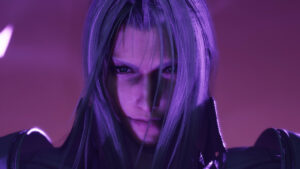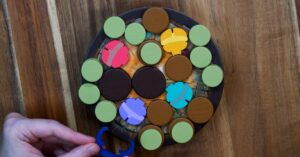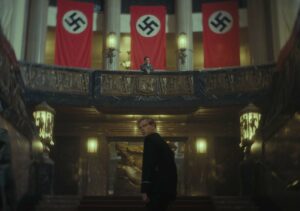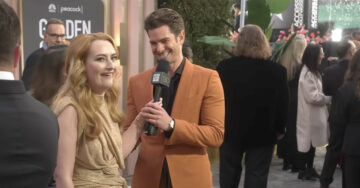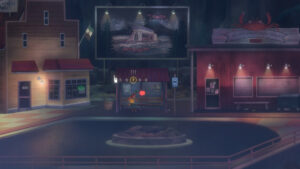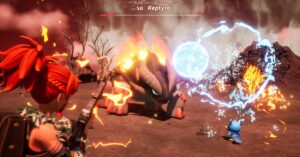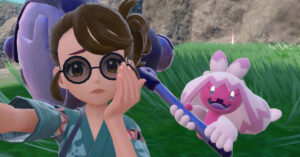[Transcript of the hearing of THE PEOPLE OF THE UNITED STATES V. THE GARGOYLES]
ALL RISE!
You may be seated. Good morning, everyone. We have a long day of cases ahead of us, so let’s just get straight to the point. The defendants today — Hugo, Victor, and Laverne, colloquially known as The Gargoyles From Disney’s The Hunchback of Notre Dame — have been accused of tarnishing an otherwise fantastic film. The alleged crime was committed on June 21, 1996, in the midst of what later became known as the Disney Renaissance era. But before we get too deep into the film itself, I believe some background information is required.
Background
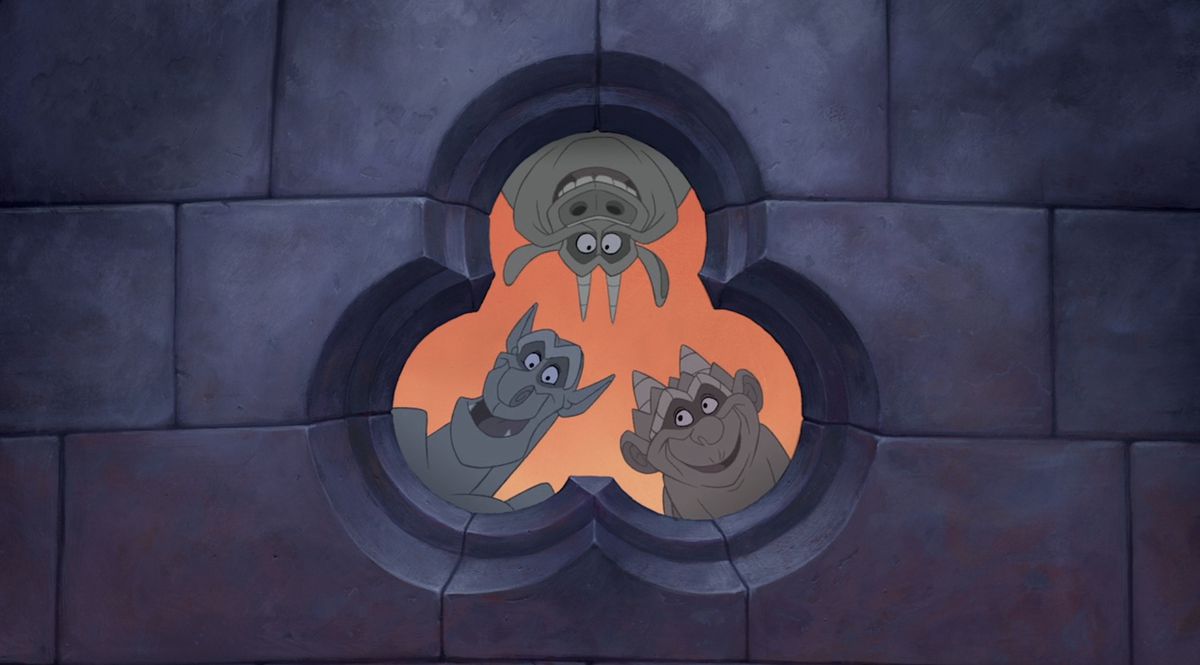
In 1831, novelist Victor Hugo released his book Notre-Dame de Paris. It was a love letter to the Notre-Dame Cathedral in Paris, which, over the centuries since its construction, had fallen into disrepair. While a large portion of the novel is devoted to describing Notre-Dame in great detail, Notre-Dame de Paris is more known for its central story and characters, namely a hunchback named Quasimodo, who lives in the cathedral’s bell tower. He falls in love with a Romani girl named Esmeralda, who also attracts the affection of the Archdeacon Claude Frollo and aristocratic military figure Captain Phoebus.
The story was a massive hit and the novel was published around the world, with its English-language title becoming The Hunchback of Notre-Dame. With this success, of course, came cross-media adaptations.
The Victim: 1996’s The Hunchback of Notre Dame
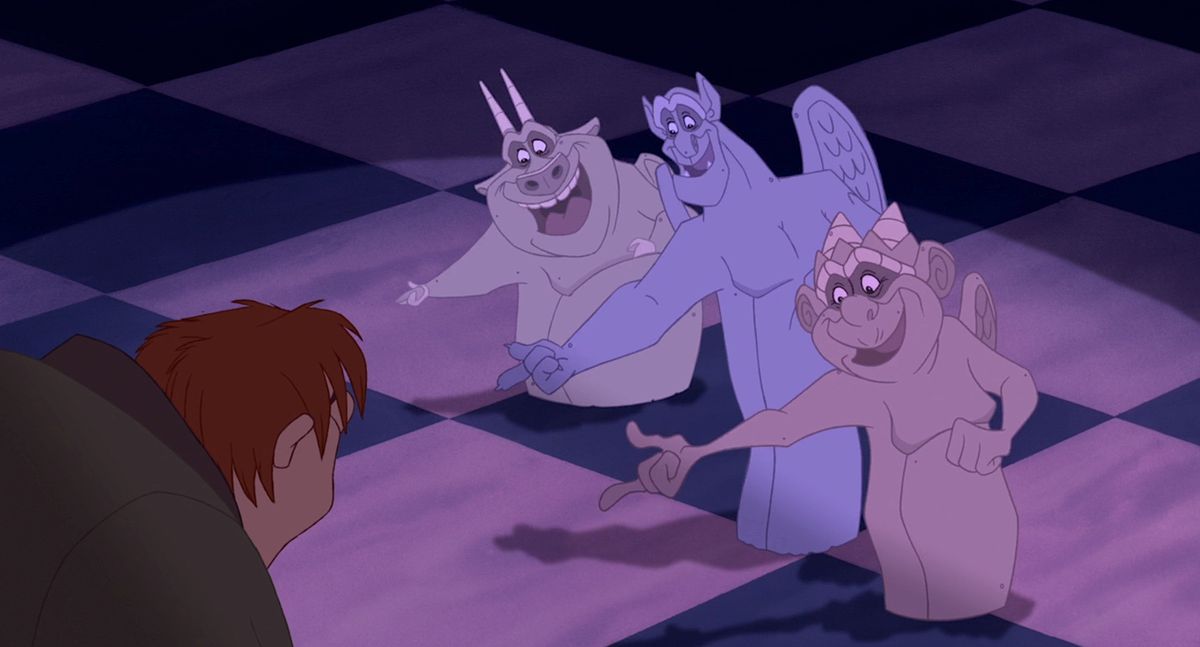
The first question when Disney planned to adapt The Hunchback of Notre Dame into a children’s animated musical was inevitably, “How will they make this novel palatable for kids? How will they remove all the adultery, torture, rape, murder, and suicide?” Hunchback is no stranger to adaptations that sanitize the material, including the 1836 opera La Esmeralda by Victor Hugo himself, as well as several film adaptations, all of which walk back Esmeralda’s death from the novel and allow her to survive. Making the story accessible and acceptable for children, however, is a major challenge.
Disney’s film wound up focusing on Quasimodo as the main character of what was originally a pure ensemble story, as many other adaptations did before it. Esmeralda and Phoebus get a romantic arc, while Quasimodo gets an ending focusing on self-acceptance. In all, the film was what people have come to expect from Disney-fied adaptations, though The Hunchback of Notre Dame is still surprisingly dark compared to most Disney animated features.
One criticism routinely aimed at the film, though, is the management of that grim tone. To counteract it, the five-person screenwriting team and directors Gary Trousdale and Kirk Wise added many moments and characters meant to provide comic relief. This is where today’s defendants come in.
The Prosecution: Why the gargoyles ruin Hunchback
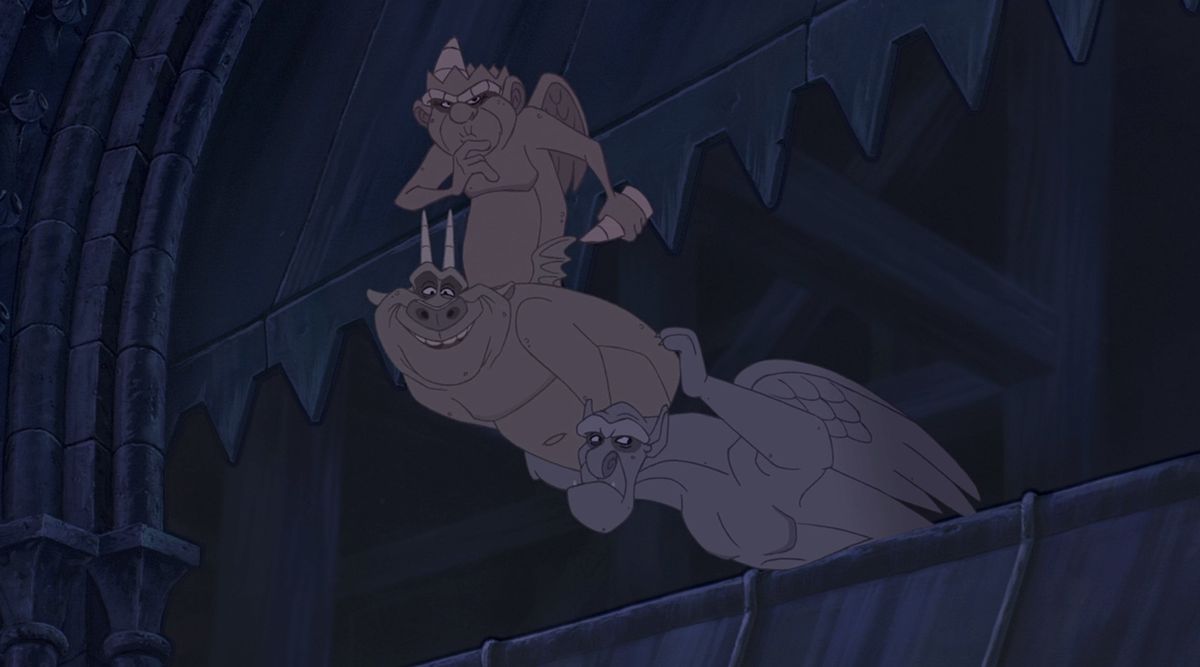
In perhaps the largest change from the novel (outside of plot), Quasimodo is given three gargoyle friends. Hugo, Victor, and Laverne are stone gargoyles who come to life around their trusted friend. (Much like the characters in Disney’s 1994 animated series Gargoyles, but sillier.)
On paper, the trio seems like a reasonable addition to the film. It could be hard to portray Quasimodo’s interiority or give him meaningful scenes, given that he spends much of the film on his own. Why not give him friends he can talk to, to express his emotions and anxieties?
The problem for many of the injured parties in this case arises when the gargoyles try to be funny — because they aren’t. However, the prosecution suggests that the problem isn’t any specific limping joke, or the humor of the script in general. The screenwriters have overcorrected the original problem of Quasimodo having no one to talk to, and given him companions that will not shut up. Whenever the gargoyles are on screen, they’re chattering and blabbering nonstop. There are potentially powerful, emotional scenes interrupted by the three gargoyles bursting in and spouting nonsense. The prosecution asks the court to consider Exhibit A: “A Guy Like You.”
[embedded content]
“A Guy Like You” stands out among the otherwise immaculate soundtrack, including “God Help the Outcasts,” “Heaven’s Light/Hellfire,” and “The Bells of Notre Dame.” The song comes as the movie is ramping up to its intense climax. Quasimodo has just helped Esmeralda sneak out of Notre-Dame so the lustful, vengeful Frollo doesn’t get her. Quasimodo is smitten with her, and the gargoyles try to convince him to confess his love to her by building up his confidence and suggesting Esmeralda has a crush on him as well.
“A Guy Like You” is a bad song. The music is grating, the lyrics are annoying, and the whole sequence is out of place. The backdrop of the song is Frollo destroying Paris with fire while searching for Esmeralda, and the song ends with Esmeralda bringing Phoebus to Notre-Dame, revealing she loves him and not Quasimodo, which makes the whole song both pointless and untrue.
That is what the gargoyles are: They’re pointless. They stand out from the rest of the film in the worst way possible. They detract from its most effective, emotional scenes. How could anyone defend these abominations?
The Defense: Why the gargoyles aren’t that bad
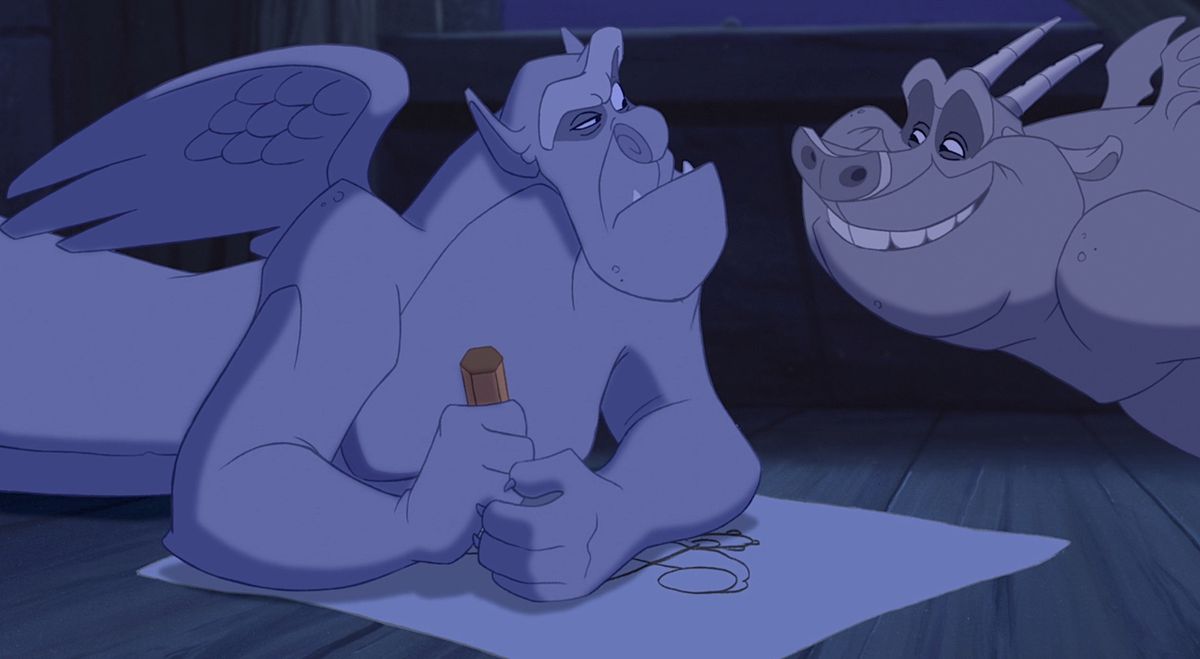
The defense wishes to note that while I loved The Hunchback of Notre Dame, even citing it as my favorite Disney film, I hated those gargoyles for so long. They seemed like the one stain on an otherwise perfect film. But as I’ve grown and rewatched the film again and again, I’ve learned to accept and appreciate them more.
People tend to overstate how much of the gargoyles’ presence is comedy-based. They do have a purpose in the plot: They help Quasimodo learn what he wants. They encourage him to overcome his fears. They’re the only characters who don’t judge Quasimodo for how he looks, up until Esmeralda comes along. The many sweet and tender moments with the gargoyles get ignored when people start their hate-rants against them. They aren’t soulless comedy machines, they’re Quasimodo’s friends first and foremost.
Plus, the voice work on the three characters is perfect. Jason Alexander, Charles Kimbrough, and Mary Wickes are excellent in their roles, and they bring these characters to life.
Lastly, on the point of jokes, the defense disagrees with the prosecution’s claim that the gargoyles aren’t funny. Humor, like all art, is inherently subjective. While the film’s jokes are intended for younger audiences, they can be enjoyed on several levels. As evidence, the defense submits the video “Funniest moments- The Hunchback of Notre Dame.” Not only is the video itself proof that some people found humor in the film, the comments section is full of people quoting their favorite jokes and celebrating the movie’s humor. The defense would also like to bring attention to one specific joke from the film: the “I’m losing to a bird!” line.
[embedded content]
This line got some notoriety after video essayist Lindsay Ellis repeatedly played it in her video “The Case for Disney’s The Hunchback of Notre Dame.” Not only is there proof that many people found that line funny, it wound up with its own cultural impact as a meme. Ellis even produced merch featuring the line, with no visual references to the film. It’s evidence of the gargoyles’ broad appeal.
Closing arguments
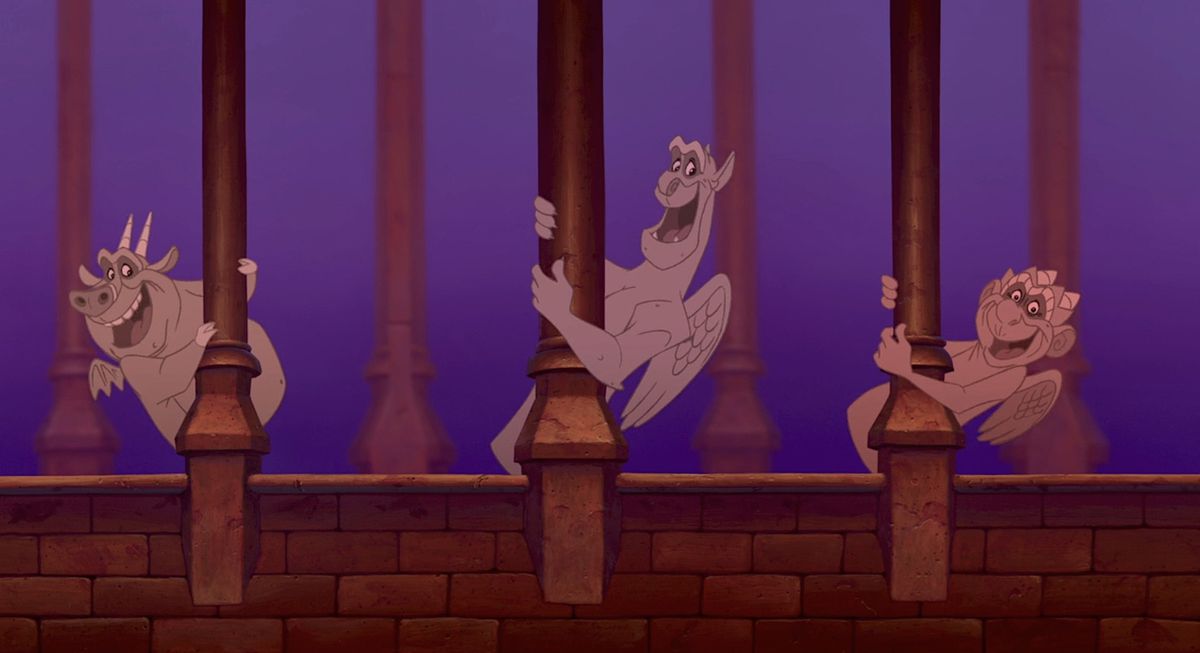
1996’s The Hunchback of Notre Dame has never been the most widely beloved Disney classic. Nonetheless, it maintains a devoted audience that loves it deeply for the ways it challenges the standard Disney formula. The gargoyles are perhaps the one element of the story that isn’t challenging those Disney standards, and are instead trying to replicate the success of comic-relief characters in other Disney films, like Aladdin’s fast-talking Genie and The Lion King’s double act of Timon and Pumbaa.
While Hunchback fans and detractors alike have expressed broad distaste for the gargoyles, it would be wrong to say they are wholly bad or without purpose. In fact, looking at all the arguments and evidence, the court rules that the gargoyles have succeeded in their role as comic-relief characters, intended not just to provide humor, but to let a film be more than its serious moments.
The gargoyles give both Quasimodo and the audience a chance to experience love and support. Without them, the film would just consist of Quasimodo’s isolation and self-hatred, Frollo’s lust and superiority complex, and Esmeralda coping with being trapped and powerless to stop her people’s persecution. Hugo, Victor, and Laverne give the audience a respite from misery.
So yes, they are a flawed feature of a flawed film. But the whole moral of Disney’s Hunchback of Notre Dame is to learn not just to accept flaws, but to celebrate them. Disney could remake the film without them, possibly as one of its endless live-action variants on animated classics. But the film wouldn’t be itself without them.
The court hereby rules that, in the case of The People of the United States v. The Gargoyles, the defendants are found not guilty of the crime of ruining Disney’s The Hunchback of Notre Dame.
Court is hereby adjourned. Bailiff, bring in the next defendant: Gurgi from The Black Cauldron.
- SEO Powered Content & PR Distribution. Get Amplified Today.
- PlatoData.Network Vertical Generative Ai. Empower Yourself. Access Here.
- PlatoAiStream. Web3 Intelligence. Knowledge Amplified. Access Here.
- PlatoESG. Carbon, CleanTech, Energy, Environment, Solar, Waste Management. Access Here.
- PlatoHealth. Biotech and Clinical Trials Intelligence. Access Here.
- Source: https://www.polygon.com/century-of-disney/23932032/disney-hunchback-of-notre-dame-gargoyles-pro-or-con
- :has
- :is
- :not
- :where
- $UP
- 1994
- 1996
- a
- Accept
- acceptable
- accessible
- accused
- Act
- adapt
- Adaptations
- added
- addition
- After
- again
- against
- ahead
- aimed
- Alexander
- alike
- All
- alleged
- allow
- along
- also
- among
- an
- and
- animation
- Another
- any
- anyone
- appeal
- appreciate
- Arc
- ARE
- arguments
- arms
- around
- Art
- AS
- At
- attention
- Attracts
- audience
- audiences
- back
- backdrop
- background
- Bad
- BE
- became
- because
- becoming
- been
- before
- being
- believe
- Bell
- bells
- beloved
- Big
- Black
- book
- both
- bring
- Bringing
- broad
- Building
- but
- by
- came
- CAN
- case
- cases
- celebrate
- Celebrating
- central
- centuries
- challenge
- challenges
- challenging
- Chance
- change
- character
- characters
- Charles
- Children
- citing
- claim
- classic
- Columns
- come
- Comedy
- comes
- comments
- committed
- companions
- compared
- complex
- confidence
- Consider
- construction
- content
- convince
- could
- counteract
- course
- Court
- Crime
- criticism
- cultural
- Dark
- day
- Death
- deep
- defendants
- Defense
- describing
- detail
- detractors
- DID
- Directors
- Disney
- do
- Doesn’t
- Dont
- double
- drawing
- during
- each
- Effective
- element
- embedded
- emotions
- encourage
- ending
- Endless
- ends
- Era
- Ether (ETH)
- Even
- everyone
- evidence
- excellent
- exhibit
- expect
- experience
- express
- expressed
- Face
- faces
- fact
- Fallen
- Falls
- fans
- fantastic
- Favorite
- fears
- Feature
- Features
- Featuring
- Figure
- Film
- films
- Fire
- First
- flawed
- flaws
- focusing
- For
- foremost
- formula
- found
- friend
- friends
- from
- full
- funny
- Gary
- General
- Genie
- get
- Girl
- Give
- given
- good
- got
- great
- grim
- grin
- Ground
- grown
- guilty
- Guy
- had
- Hang
- Hard
- Have
- having
- he
- hearing
- help
- helped
- her
- him
- himself
- his
- Hit
- How
- However
- HTTPS
- hugo
- human
- Humor
- i
- Impact
- in
- In other
- Including
- inevitably
- information
- inherently
- instead
- intended
- interrupted
- into
- isolation
- IT
- ITS
- itself
- jpg
- judge
- june
- just
- kids
- kirk
- known
- large
- largest
- later
- LEARN
- learned
- let
- letter
- levels
- Life
- like
- Line
- Lion
- Lives
- Long
- looking
- LOOKS
- losing
- love
- loved
- loves
- Machines
- Main
- maintains
- major
- make
- MAKES
- Making
- management
- many
- many people
- massive
- material
- May..
- meaningful
- meant
- meme
- Military
- Moments
- moral
- more
- morning
- most
- movie
- Movies
- much
- murder
- Music
- musical
- my
- Named
- namely
- never
- next
- no
- note
- novel
- Novelist
- number
- of
- off
- on
- ONE
- only
- Opera
- or
- original
- originally
- Other
- otherwise
- out
- outside
- over
- Overcome
- own
- palatable
- Paper
- paris
- parties
- peer
- People
- people’s
- perfect
- perhaps
- picture
- Place
- planned
- plato
- Plato Data Intelligence
- PlatoData
- played
- Point
- Polygon
- possible
- possibly
- potentially
- powerful
- presence
- Problem
- Produced
- proof
- PROSECUTION
- provide
- published
- purpose
- question
- ramping
- reasonable
- references
- released
- relief
- remove
- Renaissance
- REPEATEDLY
- required
- REST
- revealing
- Role
- roles
- routinely
- ROW
- ruin
- rules
- say
- scenes
- Screen
- script
- searching
- Section
- seemed
- seems
- Sequence
- Series
- serious
- several
- she
- since
- sneak
- So
- some
- song
- soundtrack
- specific
- stacked
- stand
- standard
- standards
- stands
- start
- States
- Still
- STONE
- Stop
- Story
- straight
- stranger
- success
- Suggests
- Suicide
- support
- survive
- sweet
- Talk
- team
- Tender
- than
- that
- The
- the world
- their
- Them
- There.
- These
- they
- this
- those
- though?
- three
- Title
- to
- today
- today’s
- TONE
- too
- top
- torture
- Tower
- Transcript
- trio
- trusted
- try
- trying
- United
- United States
- until
- us
- Victim
- Video
- Voice
- walk
- Wall
- Walt Disney
- wants
- was
- Way..
- ways
- we
- webp
- WELL
- What
- when
- whenever
- which
- while
- WHO
- whole
- wholly
- why
- widely
- Wikipedia
- will
- window
- WISE
- wishes
- with
- without
- Work
- world
- Worst
- would
- Wrong
- yes
- you
- Younger
- youtube
- zephyrnet

